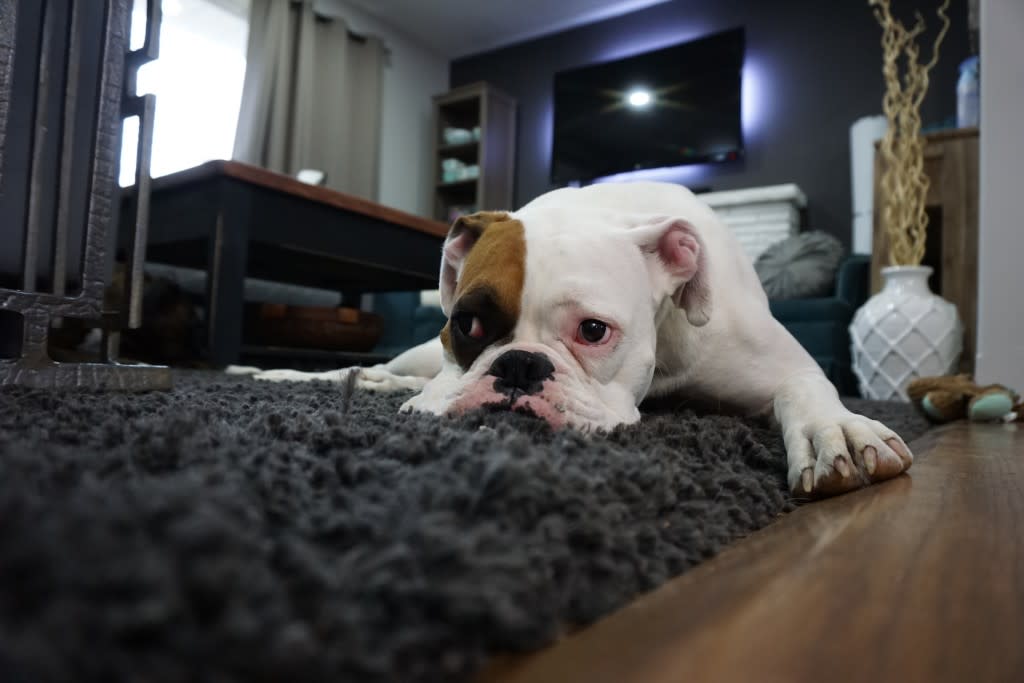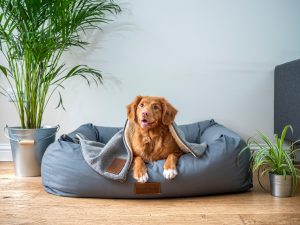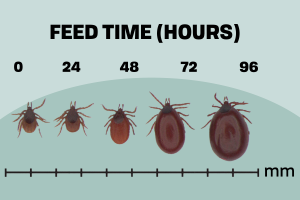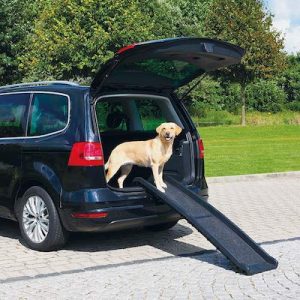Hey there, fellow dog lovers! If you share your life with a mutt, you know that one thing comes with the territory: dog hair. It finds its way onto your carpets, sofas, clothes, and blankets.
But fret not! I have sure shot ways to help you eliminate this issue quite effectively. Different breeds have varying shedding tendencies. And carpets are notorious for trapping dog hair, making it challenging to keep them clean and hair-free.
By following these tried-and-true methods, you’ll restore cleanliness and sanity to your home!
5 Dog Hair Removal Methods for Beginners!
1. Rubber Gloves or Squeegees
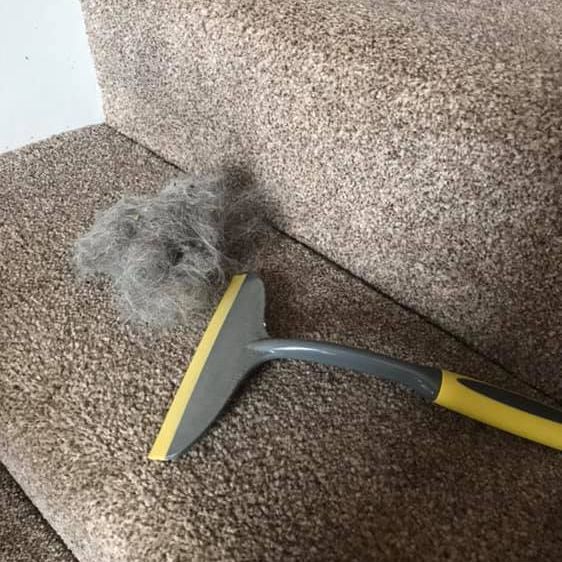
Rubber gloves or squeegees may sound unconventional, but they can work wonders removing dog hair from carpets. The rubber material creates static electricity, which attracts and lifts dog hair from the carpet fibres.
Lightly dampen them to enhance their effectiveness in picking up hair. Be careful not to saturate them. Starting from one end, gently glide the rubber gloves or squeegee across the carpet, applying slight pressure.
As you gather hair on the gloves or squeegee, wipe or rinse it into a trash bag or bin. Repeat the process until you’ve covered the entire carpet.
2. Lint Rollers, FURemovers, or Adhesive Tape
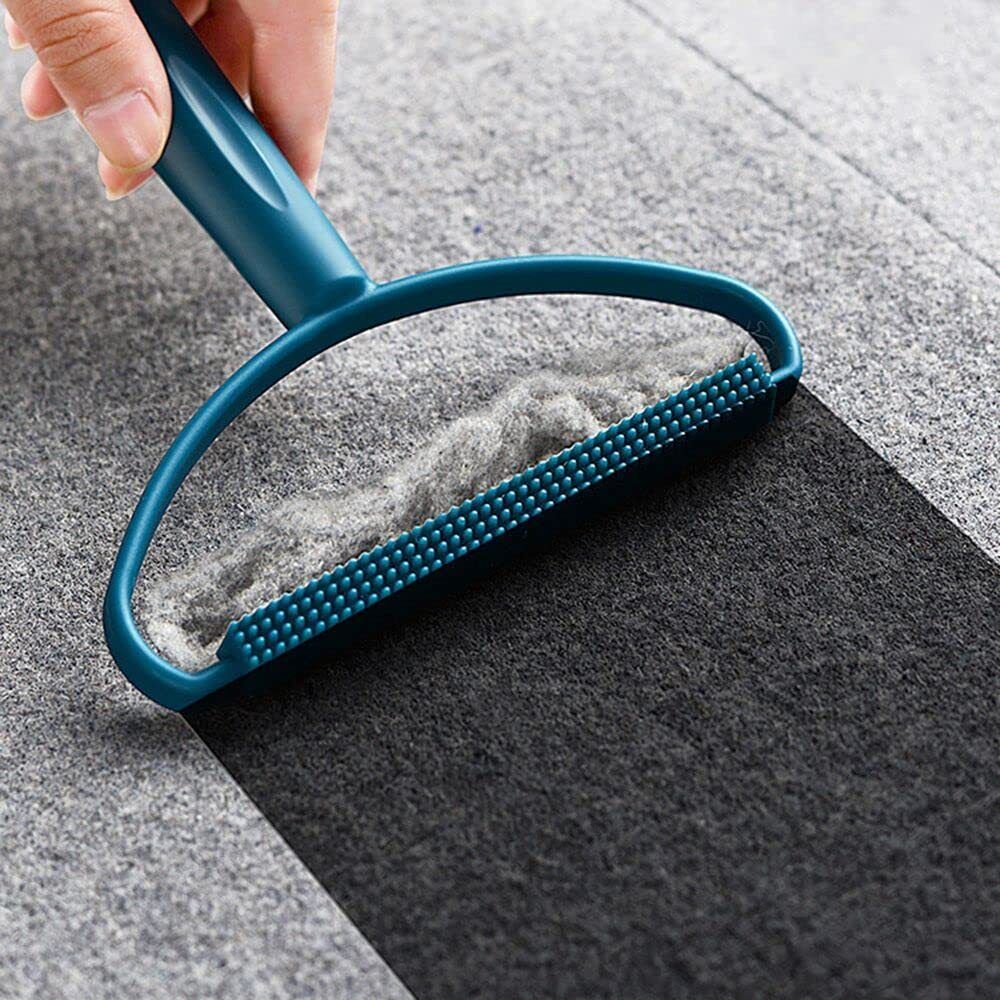
These tools have adhesive surfaces that catch and lift dog hair from the carpet. Roll the lint roller or FURemover over the carpet from one corner, applying gentle pressure. Alternatively, press the adhesive tape firmly onto the carpet, then lift it off.
As the adhesive surface accumulates hair, either tear off and discard the used portion or replace the tape or sheet with a fresh one. This ensures optimal hair removal capacity.
Note: Pay special attention to high-traffic areas and spots where your dog spends most of their time.
3. Specialized Pet Hair Removal Tools
Several specialised tools are designed specifically for removing pet hair from carpets. Here are a few options to consider:
- Carpet Rakes: These rakes have rubber bristles that efficiently gather and lift dog hair from carpets. Use them sweepingly, working from one end of the carpet to the other.
- Carpet Brushes with Rubber Bristles: Similar to carpet rakes, these brushes have rubber bristles that effectively grip and remove dog hair. Use them in a back-and-forth motion across the carpet.
- Pet Hair Removal Stones or Blocks: These are porous blocks made of natural materials that grab and lift dog hair from carpets. Rub the stone or block across the carpet, applying light pressure.
- Carpet Sweeper with Rubber Blades: Carpet sweepers equipped with rubber blades can be highly effective in collecting dog hair. Push the sweeper over the carpet, and the rubber blades will grab the hair, depositing it into a collection bin.
Read More: What are guard hairs on dogs? Are they different from normal hair?
4. Using Fabric Softener
Step 1: Dilute fabric softener in water
Mix a small amount of fabric softener with water in a spray bottle. The ratio should be approximately one part fabric softener to three parts water.
Step 2: Lightly spray the carpet.
Mist the diluted fabric softener onto the carpet, targeting areas with significant dog hair buildup. Avoid saturating the carpet, as excessive moisture can lead to mould or mildew.
Step 3: Allow the fabric softener to sit.
Let the fabric softener solution sit on the carpet for a few minutes to work magic and loosen the hair.
Step 4: Vacuum the carpet.
The loosened hair should be easier to remove now.
5. Use Baking Soda
Baking soda is great for absorbing odours but can also assist in loosening dog hair from carpets.
Step 1: Sprinkle baking soda liberally.
Sprinkle a generous amount of baking soda evenly across the carpet, focusing on areas with visible dog hair.
Step 2: Allow the baking soda to sit.
Leave it on the carpet for at least 15-20 minutes to penetrate the fibres and loosen the hair.
Step 3: Vacuum the carpet.
The baking soda will help lift the hair, making removing it easier with a vacuum.
Step 4: Repeat if necessary.
For carpets with heavy dog hair accumulation, you may need to repeat the process a few times to achieve results.
How to prevent excessive shedding in dogs?
While it’s important to know how to get rid of dog hair from carpets, sofas, and clothes, prevention is always better than cure.
1. Groom your dog regularly.
Option 1: Brushing and Combing
- Choose the right brush or comb for your dog’s coat type. You’ve various options, such as slicker brushes, bristle brushes, and undercoat rakes.
- Establish a grooming routine by setting aside regular time slots for grooming. A general rule of thumb is to brush your dog at least once or twice a week, but the frequency may differ based on the breed.
- Approach the grooming session calmly and patiently. Use gentle strokes to brush or comb your dog’s fur. Take breaks if needed.
- Pay extra attention to areas where dog hair tends to mat or tangle, such as behind the ears, under the armpits, and around the tail.
Option 2: Professional Grooming
- Research and choose a professional groomer with experience handling your dog’s breed and coat type.
- Set a grooming schedule based on your dog’s needs with your chosen groomer. This may include services such as bathing, trimming, and coat maintenance.
- Clearly communicate your expectations and preferences to the groomer. Discuss the desired length of the coat, specific areas that require attention, and any other concerns you may have.
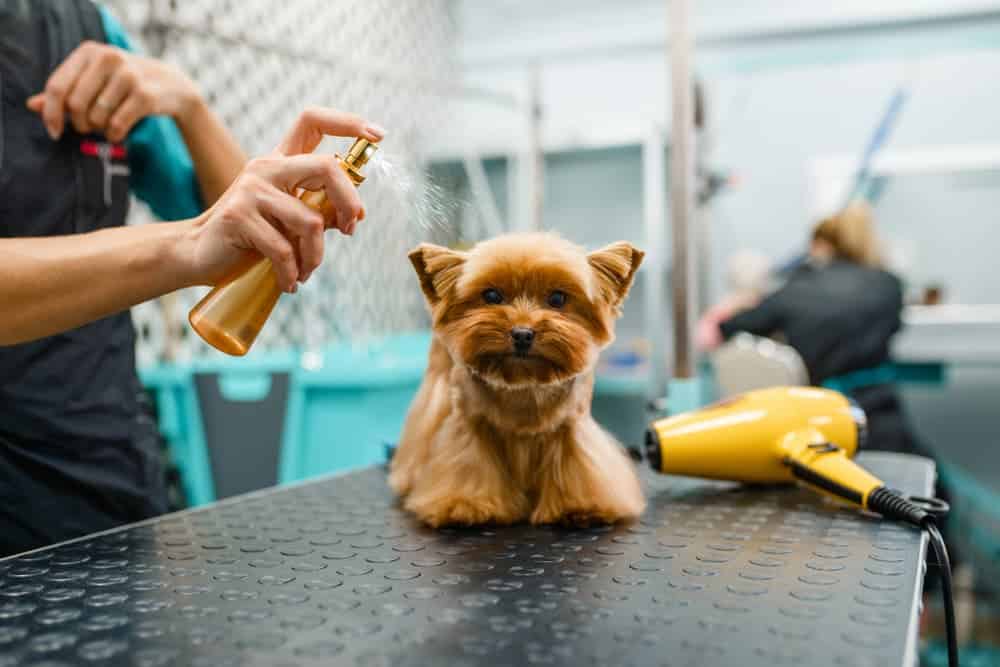
2. Establish a consistent bathing schedule.
Regular bathing is vital in managing dog hair and keeping it from spreading throughout your home. Here’s what you need to do:
- Use dog-friendly products.
- Brush before bathing.
- Properly wet your dog.
- Apply shampoo and massage.
- Rinse thoroughly.
- Condition (if necessary).
- Towel-dry and brush.
3. Appropriate diet and supplements for a healthy coat.
Ensure your dog’s diet provides the nutrients for a healthy coat. A well-balanced diet with high-quality proteins, fatty acids, and essential vitamins and minerals can promote a shiny and resilient coat.
4. Minimize stress to reduce excessive shedding.
Stress can contribute to excessive shedding in dogs. Minimising stress factors can help reduce shedding and maintain a healthier coat.
Create a peaceful and stress-free living space for your dog. Provide a designated area for them to relax, away from noisy or high-traffic areas.
Additionally, remember that dogs thrive on routine, so establish a consistent schedule for feeding, exercise, and sleep. Predictability and structure can help reduce stress levels.
Read More: How to remove dog pee from your home and furniture?
How to repel your dog from the furniture?
If you’re tired of your dog’s constant presence on your furniture and want to establish boundaries, there’s a way.
1. Establish clear boundaries.
Setting clear boundaries for your dog regarding furniture access is an essential first step. Here’s how you do it:
Consistency is key: Decide whether your dog is allowed on furniture, and stick to your decision. Dogs thrive on consistency, so enforcing the rules consistently will help them understand what is expected.
Provide an alternative: Create a comfortable and inviting space for your dog with its own bed or designated area. Make this space enticing with their favourite toys, blankets, and treats.
Redirect their attention: If you notice your dog attempting to climb onto the furniture, redirect their attention to their designated area by calling them over and offering a treat or engaging them in play.
2. Use Physical Barriers & Furniture Covers
Baby gates or pet gates: Install gates in doorways or use freestanding gates to restrict your dog’s access to certain areas of the house, including rooms with furniture.
Furniture covers and throws: Cover your furniture with machine-washable covers or throws. Not only do they protect your furniture from dog hair and dirt, but they also create a barrier between your dog and the upholstery.
Anti-climbing devices: Use products designed to deter dogs from jumping onto furniture. These devices typically attach to the furniture and make it physically uncomfortable or unstable for your dog to climb on.
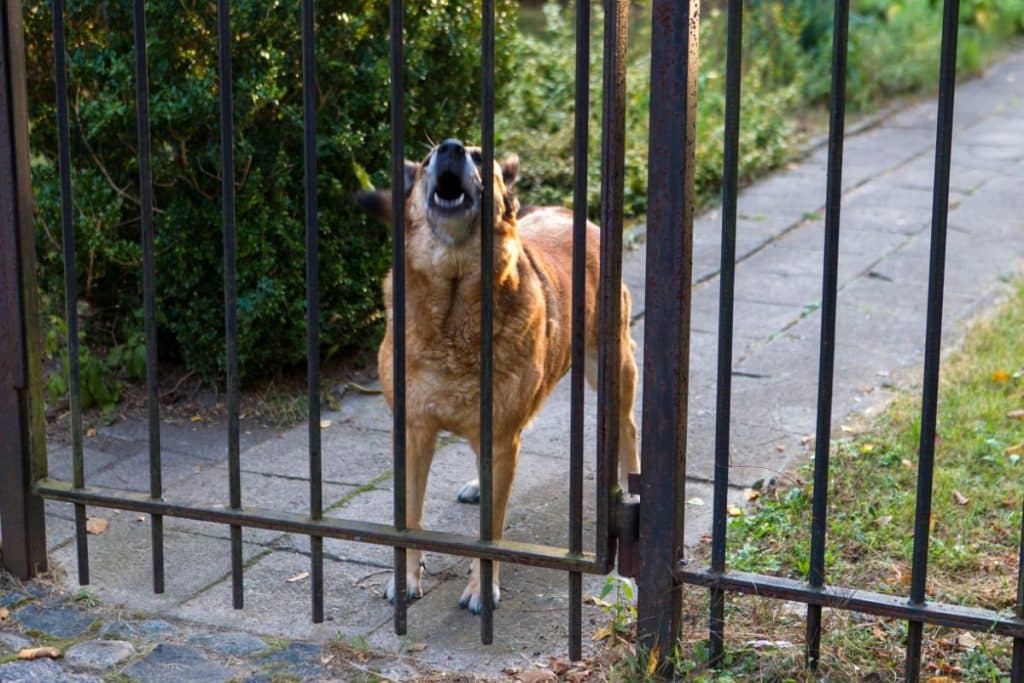
3. Utilize Training Techniques
Training your dog to stay off furniture requires patience and consistency.
“Off” command: Teach your dog the “off” command and reward them when they respond correctly. Start using treats or toys to lure them off the furniture, and gradually phase out the rewards as they learn the command.
Positive reinforcement: Whenever your dog chooses to stay off the furniture and use their designated area, provide positive reinforcement through praise, treats, or playtime. This reinforces the desired behaviour.
Redirect and offer alternatives: If you catch your dog attempting to climb onto the furniture, calmly redirect their attention to their designated area using toys, treats, or a favourite activity.
4. Use Pet Repellent Sprays
Generally speaking, pet-friendly sprays can help deter dogs from the furniture. These sprays often have unpleasant scents to dogs, discouraging them from jumping or lying on the furniture. Ensure that you choose a spray that’s safe for both your dog and the furniture material.
Here’s how to use them effectively.
Step 1: Choose a pet-safe spray.
Look for pet-repellent sprays specifically designed for dogs. These sprays typically use natural ingredients and have a scent that dogs find unpleasant but harmless.
Step 2: Test on a small area
Before applying the spray to your furniture, test it on a small, inconspicuous area to ensure it doesn’t damage or stain the fabric.
Step 3: Apply to targeted areas
Identify the areas of the furniture where your dog tends to climb or rest. Spray a light mist of the repellent onto these areas, focusing on the fabric or surfaces your dog is attracted to.
Step 4: Reapply as needed
Depending on the spray, you may need to reapply it periodically or after cleaning the furniture. Follow the instructions provided by the manufacturer for optimal effectiveness.
It’s important to note that while pet repellent sprays can be useful, they should not be used as a substitute for proper training and establishing boundaries. Combine sprays with consistent training techniques to achieve the best results.
Read More: Everything You Must Know About Treating Torn Dog Nails
Frequently Asked Questions (FAQs)
1. How often should I groom my dog to minimise shedding?
The grooming frequency depends on your dog’s breed and coat type. Generally, it is recommended to brush and comb your dog at least once or twice a week. However, breeds with longer hair or those prone to matting may require daily grooming sessions.
2. How can I prevent my dog from shedding excessively?
While shedding is natural, you can take steps to minimise excessive shedding.
Regular grooming practices such as brushing and combing help to remove loose hair. Maintaining a healthy diet and providing supplements your veterinarian recommends can promote a healthy coat and reduce shedding. Minimising stress and providing exercise and mental stimulation can also reduce shedding.
3. Are carpet rakes worth it?
Carpet rakes are generally a worthwhile investment as they’re designed to effectively remove deep-seated dirt, debris, and pet hair from carpets. They have long, sturdy bristles that can penetrate the carpet fibres, loosening and lifting the embedded hair.
